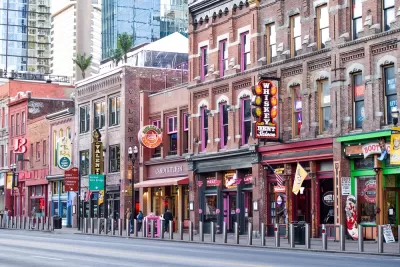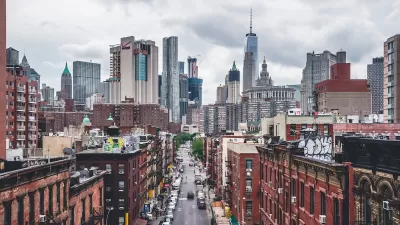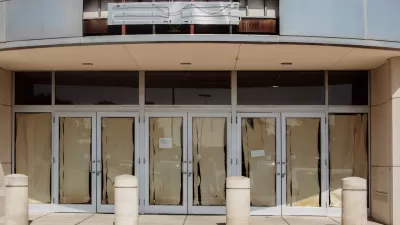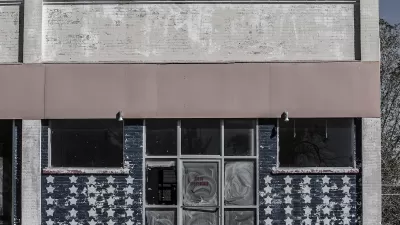Retailers must respond to changes to stay successful, and urbanization is one of the major factors influencing changing circumstances. Retail representatives that react with care and thoughtfulness contribute to positive urbanization.

Retailers must respond to changes to stay successful. Urbanization is one of the major factors influencing changing circumstances. Retail representatives that react with care and thoughtfulness contribute to positive urbanization. Here are some examples of how that can pan out.
Making it Easier for People to Get What They Need
The European Commission published survey details about how people’s shopping habits changed in 2020. One of the takeaways was that 81% of people shopped closer to home or supported local businesses. That trend also emerged in other areas of the world.
Today’s adaptive retailers should bear that in mind while staying aware of the “15-minute city” ideal. It’s a vision whereby people could accomplish most of their daily necessities by taking a short stroll or bicycle ride from their homes.
Mr. Price is a homewares and clothing chain in South Africa. It recently opened standalone stores selling baby products to enter a highly competitive market. Analysts say urbanization, changed lifestyles, and new parental preferences have all combined to raise the demand for baby products in the country.
The company conducted two years of market research before launching the standalone stores. The goals are reportedly to make parenting more affordable and convenient through the retail experience.
Being profitable and inspiring customer loyalty as a retailer is all about meeting customers’ needs with minimal friction. This example shows that aim in action.
Embracing a Creative Placemaking Trend
Many forward-thinking retailers utilize real-time space visualization tools for better planning. An emerging trend called creative placemaking takes space usage to another level. It allows retailers and other businesses to envision how they can best fit into and expand existing landmarks.
For example, Charity Hospital in New Orleans closed in 2005 due to the devastation from Hurricane Katrina. However, it redeveloped into a $300 million mixed-use space that includes retail, residential units and a medical museum.
Moreover, city officials in Nashville, Tennessee, committed to restoring Victorian buildings along Second Avenue damaged by a bomb. Some associated planned upgrades include curated retail stores and outdoor dining in a corridor connecting First and Second avenues to the river.
A common worry about urbanization is that it will destroy existing establishments or buildings to make way for new ones. However, that’s not the only option. When retailers participate in these revitalization efforts, people are more likely to link them to positive urbanization.
Moving IKEA to a More Accessible Location
When most people think of stores associated with the Swedish furniture and home goods brand IKEA, they envision huge warehouses outside city centers. However, a new location under construction on London’s Oxford Street could change that perception while showing a practical response to growing urbanization.
The location is in the heart of a prime London shopping area. IKEA will occupy three levels of the seven-story building. The decision to put the retailer in an unconventional location was due to a desire to increase accessibility. It was also a response to global movements associated with urbanization, environmental awareness and changing demographics that affect how people live and shop.
This decision could help IKEA become more profitable by reaching people who cannot ordinarily get to its stores because of a lack of transportation. It could also spark a positive urbanization trend where retailers that normally occupy sprawling warehouses opt to make the best use of vertical space instead. If that happens, the retail outlets will favorably impact their communities by fitting into existing buildings located in convenient places.
Responding Well to Urbanization Takes Forethought
Running a retail operation is a constant juggling act of evaluating and responding to various factors. As urbanization becomes more prominent in many areas of the world, these examples will help retailers plan how to best respond to remain mindful of residents’ needs.

Planetizen Federal Action Tracker
A weekly monitor of how Trump’s orders and actions are impacting planners and planning in America.

Chicago’s Ghost Rails
Just beneath the surface of the modern city lie the remnants of its expansive early 20th-century streetcar system.

San Antonio and Austin are Fusing Into one Massive Megaregion
The region spanning the two central Texas cities is growing fast, posing challenges for local infrastructure and water supplies.

Since Zion's Shuttles Went Electric “The Smog is Gone”
Visitors to Zion National Park can enjoy the canyon via the nation’s first fully electric park shuttle system.

Trump Distributing DOT Safety Funds at 1/10 Rate of Biden
Funds for Safe Streets and other transportation safety and equity programs are being held up by administrative reviews and conflicts with the Trump administration’s priorities.

German Cities Subsidize Taxis for Women Amid Wave of Violence
Free or low-cost taxi rides can help women navigate cities more safely, but critics say the programs don't address the root causes of violence against women.
Urban Design for Planners 1: Software Tools
This six-course series explores essential urban design concepts using open source software and equips planners with the tools they need to participate fully in the urban design process.
Planning for Universal Design
Learn the tools for implementing Universal Design in planning regulations.
planning NEXT
Appalachian Highlands Housing Partners
Mpact (founded as Rail~Volution)
City of Camden Redevelopment Agency
City of Astoria
City of Portland
City of Laramie






























